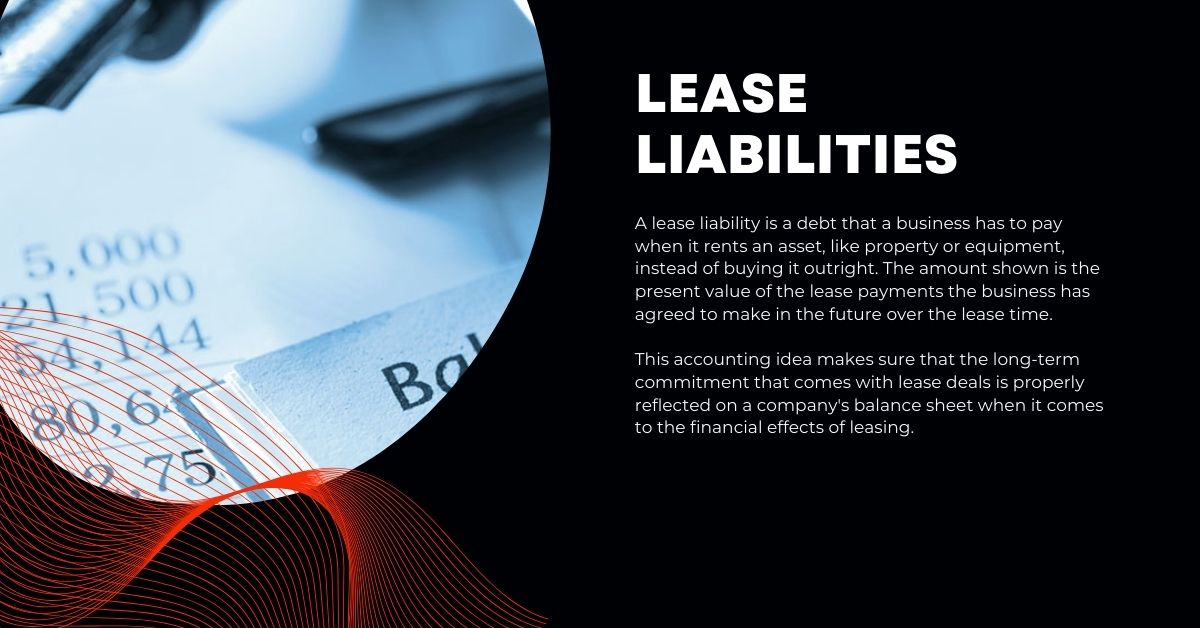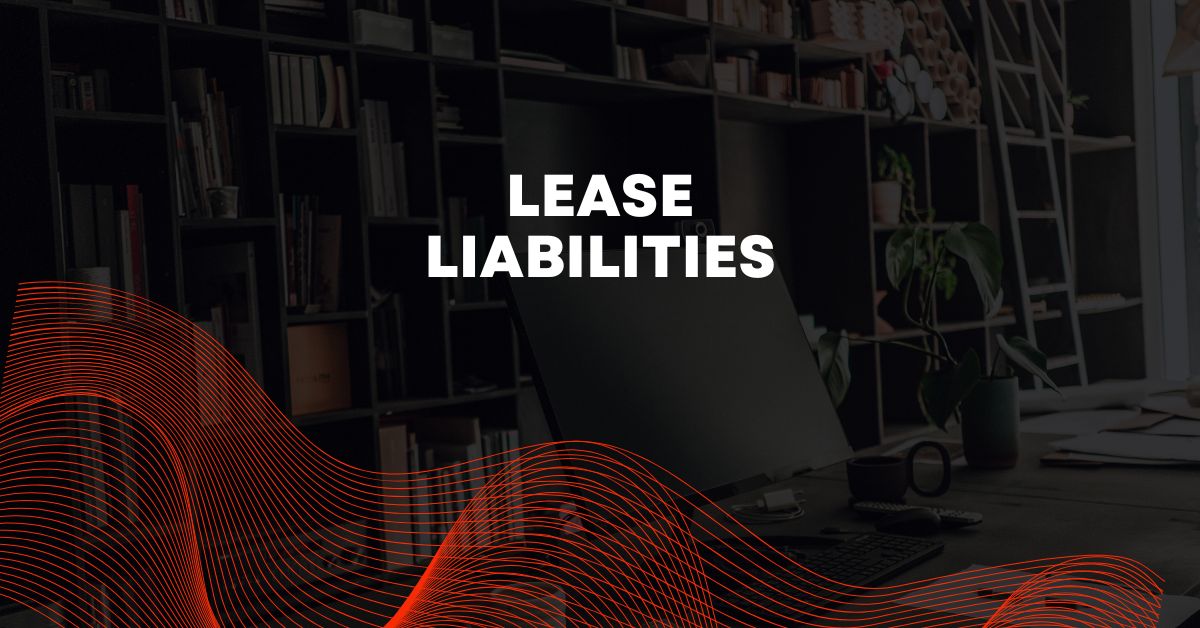Think about a store that rents its space instead of holding it. There is a financial responsibility for the store to make the monthly rent payments. This is called a lease liability. This blog post will talk about how lease issues are handled in accounting and how they affect a company’s income statement and balance sheet.
What is Lease Liabilities?

A lease liability is a debt that a business has to pay when it rents an asset, like property or equipment, instead of buying it outright. The amount shown is the present value of the lease payments the business has agreed to make in the future over the lease time.
This accounting idea makes sure that the long-term commitment that comes with lease deals is properly reflected on a company’s balance sheet when it comes to the financial effects of leasing.
How Do You Calculate the Lease Liability?
To calculate the lease liability, you need to determine the present value of all future lease payments. Here’s the formula:
Lease Liability = Σ [PMT / (1 + r)^n]
Where:
- PMT: The periodic lease payment
- r: The discount rate (often the implicit rate in the lease)
- n: The number of periods until the payment is due
- Σ: Summation symbol, indicating the sum of all the present values of future payments
Key Points to Remember:
- Discount Rate: The discount rate used should reflect the specific circumstances of the lease. It’s often the implicit rate in the lease, but it can also be the lessee’s incremental borrowing rate if the implicit rate cannot be readily determined.
- Lease Payments: Consider all future lease payments, including fixed payments, variable payments, and residual value guarantees.
- Timing of Payments: Account for the timing of each payment to accurately calculate the present value.
- Lease Term: The lease term is the period over which lease payments are made.
By applying this formula and considering the specific terms of the lease agreement, you can accurately calculate the lease liability and its impact on the company’s financial statements.
How Are Lease Liabilities Recorded?
Lease liabilities are long-term obligations that a business shows on its balance sheet. When a business signs a lease, it figures out how much all the future lease payments are worth right now. This number shows how much the lease debt is at the beginning.
This debt goes down as lease payments are made over the term of the lease, which shows that the obligation is going down. This asset, called the right-of-use asset, shows that the company has the right to use the leased asset. The balance sheet also shows it.
What is Needed to Record Lease Liability?
To record a lease liability, a company needs several key pieces of information:
- Lease Term: The length of the lease, including any choices to make the lease last longer or end it early.
- Lease Payments: The amount and timing of future lease payments, including any variable payments or residual value guarantees.
- Discount Rate: The right interest rate to use to bring down the value of future lease payments to what they are worth now. This is often the implicit rate in the lease, but if not determinable, the company’s incremental borrowing rate may be used.
- Initial Direct Costs: Any costs incurred by the lessee to negotiate and arrange the lease, such as legal fees or consulting costs.
- Lease Incentives: Any incentives received from the lessor, such as rent concessions or lease bonuses.
The company can use this knowledge to figure out how much the future lease payments are worth right now and put that amount on its balance sheet as a lease liability. A right-of-use asset is also recognized to show that the company has the right to use the hired asset.
If you want to read more about other financial blogs, you can read here:
- Who is Ready for Investment? Time to Turn Your Dreams into Reality
- OPM in Stock Market: A Deep Dive into Operating Profit Margin
How do you identify lease liabilities?
To identify lease liabilities, you need to examine lease agreements and determine if they meet specific criteria. Key factors include:
- Transfer of Ownership: If the lease agreement transfers ownership of the asset to the lessee at the end of the lease term, it’s likely a finance lease, resulting in a lease liability.
- Bargain Purchase Option: If the lease includes a bargain purchase option, allowing the lessee to acquire the asset at a significantly reduced price, it’s often considered a finance lease.
- Economic Life and Lease Term: It’s probably a finance lease if the length of the lease is a big part of the asset’s useful life.
- Present Value of Lease Payments: If the present value of lease payments is substantially equal to the fair value of the asset, it’s indicative of a finance lease.
By looking at these things, you can find lease deals that need to have lease liabilities shown on the balance sheet. This gives you a fuller picture of a business’s finances.
Is Lease Liability a Fixed Asset?
No, a lease debt is not a fixed asset in and of itself. It’s a responsibility that lasts a long time and shows how much future lease payments are worth right now. There is, however, a right-of-use asset that a company usually records on its balance sheet when it signs a lease.
This fixed asset is a right-of-use asset, which means the renter has the right to use the leased asset. The lease debt is linked to the recognition of a fixed asset on the balance sheet, even though it is not a fixed asset itself.
Is Lease Liability the Same as Debt?
Debt and lease responsibilities are both financial obligations, but they are not the same thing. Debt usually means taking money with a set amount of interest and time to pay it back. If a business signs a lease agreement and agrees to make future lease payments, that company has lease liabilities.
But according to some accounting rules, lease liabilities are handled the same way as debt because they are long-term debts. The balance sheet, income statement, and cash flow statement of a business are all affected by its debt and lease responsibilities.

